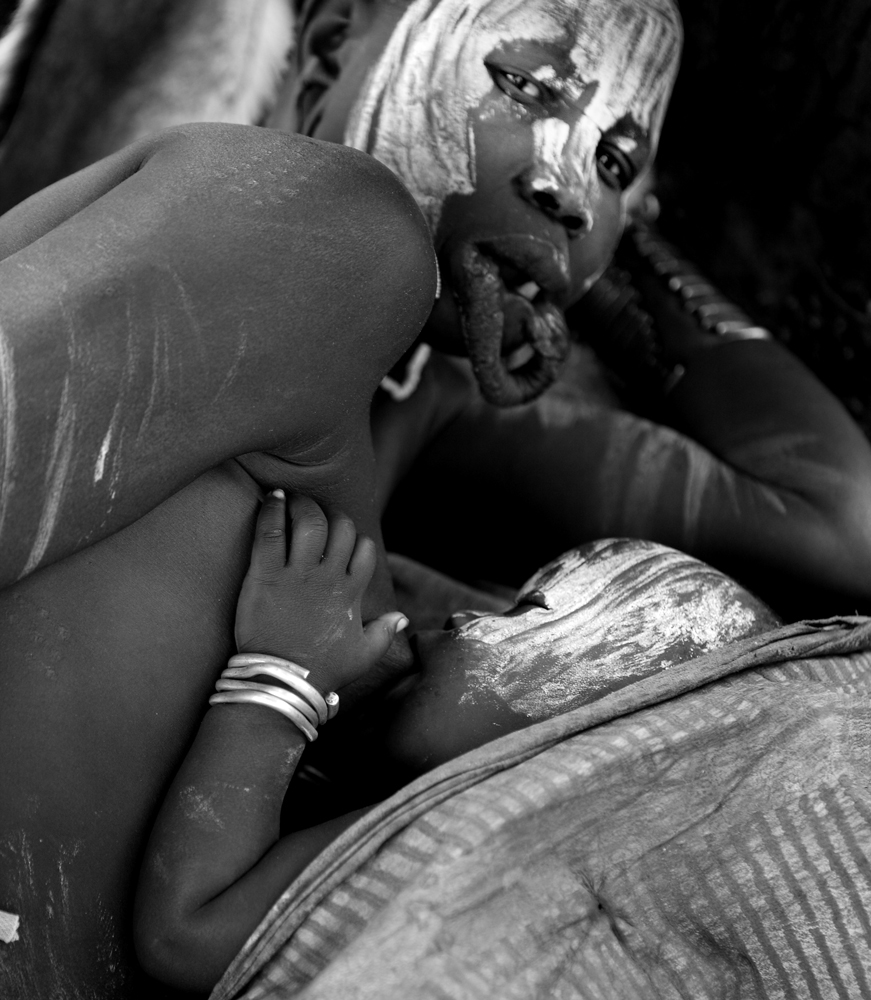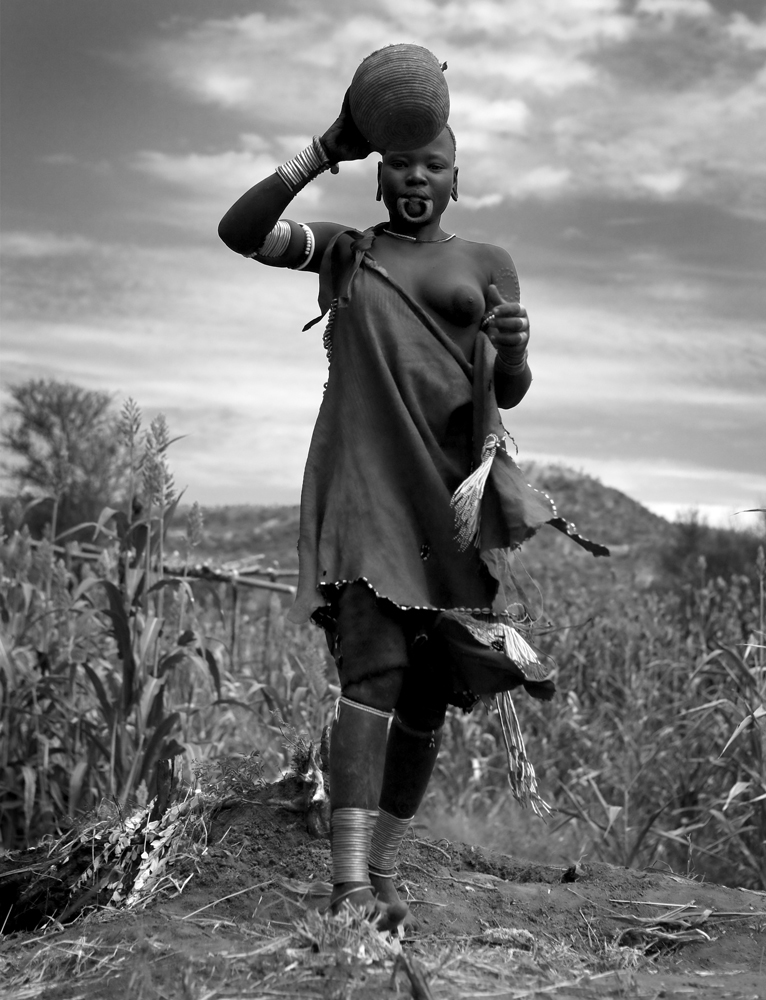Two Women, Two Tribes, and a Journey of a Lifetime is a 9-part series penned by Lim Ka Ea about her one-year stint in Addis Ababa, Ethiopia where she accompanied her husband on his 9th humanitarian mission. No stranger to travel and humanitarian missions herself, she learned that Ethiopia is not really Africa and Africa is not really all about national parks or long distance-runners. She also learned that being a “tai-tai” is so overrated unless there is another “tai-tai” to get into mischief with. This 9-parter tells the story of how two “tai-tais?”explored Ethiopia and discovered their life as both an individual and a woman. This weekly series started with Part I: My first encounter with Africa, Part II: The faces, sounds and smell of Addis Ababa, Part III: The gift of a kindred spirit , Part IV – Getting in synch with nature, Part V – Hardships and Friendship, Part VI – Our first sightings of the local traditional tribes, Part VII- Irada and Ka Ea in Mursiland and Part VIII – Uleketele and his two wives.

Part IX – Ciao, my Jaala!
At around 11:30am, Irada came and informed me that we were asked to leave immediately by one of the Mursi men. Although the reason given was that they would start their drinking session soon, I personally suspected that as soon as they realised our stay was no longer profitable to them, we were not welcomed anymore.
As soon as we realised the same, we abandoned our camping plans and proceeded to return to Jinka, much to our disappointment. We figured that there would be no point sticking around without much access to them.
As we slowly drifted away from the village, I turned my head back several times, hoping to catch a glimpse of Uleketele and his wives waving after us. Sadly, I came to realise that our presence were no longer felt as soon as we boarded the car. We were like ghosts to them, coming and leaving unannounced.
On our way back to Jinka, we saw a dark glistening figure walking towards us. As we came closer, I was shocked to see a Mursi man in complete nudity but for his tools (more specifically spear and belt) hanging casually across his dark torso. Being a woman and Malaysian, I was torn between taking a good look at his “package” or averting my eyes and pretending to be mortified.
Thankfully, Irada managed to take some photos.
Tradition, politics and tourism
That day, I couldn’t help but think about the brief experience I had with the Mursi and all the different information I had received from some of the locals whom I met along the way. As I began to do some research about this tribe, I have learned how the government and tourism have taken a new dynamic turn on their life and tradition, while some positively, many to the contrary.
Now, with an estimated population of 7,000, many Mursi have abandoned their traditionally nomadic and pastoralist life and begun to rely on tourism more and more as a form of living. The practice of lip-plate had initially originated from a deliberate attempt to make women less attractive to slave traders and then evolved to something of a more aesthetic and social nature.
Other sources indicated that the size of the lip-plate correlates with the size of the bearer’s bride wealth, the number of cattle a man must pay for her hand. The park ranger I met at Mago told me that now, it is just a practise sustained by tourism. The only reason which attracts tourists to the Mursi is solely their lip-plates.
During the Soviet-backed Derg regime under the government of Mengistu Haile Mariam (1975-1991), the Mursi had been told to abandon their practise of lip-plate because it was seen as a symbol of backwardness. Apparently, threats were issued by a regional government official that whoever continued to stretch their lips would have their lower lips cut off entirely, served as a lesson to others.
After the fall of the Derg regime, the Mursi were presented with another predicament immediately. Under the present government of Meles Zenawi, an attempt was made to introduce a federal constitution based on reorganising the administrative structure of the whole country, as it was slowly divided into nine autonomous regional states. Each state is named after one ethnic dominant group; Amhara, Oromio, Tigray, Afar and Somali. Where there was no obvious dominant group such as seen in the south-west of Ethiopia, formed largely by smaller ethnic groups like the Mursi, a Southern Nations, Nationalities and Peoples’ Regional State (SNNPRS) was declared.
During this time, the government also attempted to establish and improve the tourism industry by assigning independent consultants to define the boundaries of Nechisar, Omo and Mago parks to ease the management of these parks. Inevitably, many tribes were forcibly resettled as their lands were confiscated and destroyed for the purpose of development.
As I read David Turton’s article in the Anthropology Today journal written in 2004, I was hit with a sudden revelation.
In his article, he wrote,
On the one hand, then, the lip-plate is prized by Mursi men and women as a mark of their cultural identity and political autonomy. On the other hand, they recognize that outsiders see it as a mark of their backwardness, which must be abandoned if they are to gain the benefits of ‘development’. This ambivalence is heightened by another and, at first sight, contradictory message about the lip-plate which has been reaching the Mursi in recent years, through the activities of tourists. For, while tourists are presumed to share the general disdain for, not to say disgust at, the practice shown by outsiders, they nevertheless come great distances mainly, it seems, in order to photograph this symbol of Mursi backwardness.
In his article, he also quoted an interview with three Mursi men shown in a television documentary made in 1991. When asked why they thought tourists were taking their photographs, they answered that they didn’t know since most tourists just came, took their photographs and left without saying anything. While they were often perceived as uncivilised thieves, one of the men commented that the failure of tourists to pay what the Mursi regarded as a fair price for photographs, were in fact thieves themselves.
Due to my own ignorance, I was remorsed by my own sweeping judgment against the Mursi, thinking that while they try to maintain their traditional way of life, they are also governed by their greed to profit from tourism. In effect, once their land was taken and with very little help from the government, they have to accept their fate as part of the government’s tool to gain profit.
Stories of them being wild and violent are probably concocted in order for tourists to depend on armed scout, in which half of the fee paid to them and local guides go to the government. Our only consolation for our trip is that we want to bring their stories and pictures to the world so that they can be better understood. (Click here for more information on the Mursi)
End of a journey
I asked Irada what she has learned from our journey to which she answered me. “Every human being has a story. I’ve learned that until we begin to understand them, who are we to have the right to tell them how to live?”
As Irada continues to be inspired by Ethiopia and wishes to make a trip to Turmi for her next project on the Hamer and Karo tribes, I slowly prepared myself for another journey.
As soon as we arrived in Addis Ababa, it was obvious that the season had changed. I faced my second winter in Ethiopia but that year, it was less cold and lonely. I have found a friend and finally made my peace with Ethiopia.
Ka Ea and Irada took two more trips together to Bahir Dar and Harar. Ka Ea visited Tigray on her own before she finally left Ethiopia in 2008 with a heavy heart.
Ka Ea used to be a globe trotter. She has lived in Timor Leste and Afghanistan while working as a civic education and human rights officers for the United Nations. She then tried to be a full time housewife in Ethiopia and Cambodia but failed miserably. Now, she works with lawyers and human rights activists by day and watches Discovery Travel & Living by night. She writes for The Malaysian Insider during her dwindling free time. She longs for the day when someone would pay her to travel, eat and write.
Irada Humbatova was born in Azerbaijan’s capital Baku on 12 July 1974. She trained and worked as a midwife from 1994 to 1997, later assisting the International Federation of the Red Cross/Red Crescent with maternal health work by training and supporting traditional birth attendants in rural areas. Since then she has followed her husband on Red Cross missions around the world, developing her love for photography into a passion and profession. Inspired by Africa’s immense beauty and its people’s suffering she moved from art photography to photojournalism. She has since grown to become Reuters’ stringer for Ethiopia and work on assignments for other news outlets and magazines. Irada is currently back in Baku continuing her work with Reuters. She contributes most of the photographs in this series.


Thanks, Ruzaini.
That's the last of the series. Really appreciate your encouragement all through out.
You'll be the first one to know if it ever gets printed.
All the best to you and keep writing yourself too. :)
Nice and informative reading. Really hope these pieces can be documented in a hard print copy.